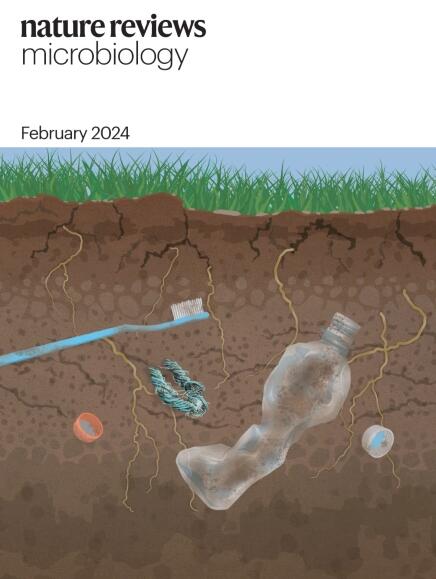噬菌体卫星的遗传学、生态学和进化
IF 103.3
1区 生物学
Q1 MICROBIOLOGY
引用次数: 0
摘要
噬菌体卫星体被定义为生命周期依赖于辅助病毒的病毒。因此,它们通常被认为是寄生虫的寄生虫,尽管最近的研究表明,将它们视为沿着寄生-共生连续体进化的共生体可能更准确。在过去的几年里,多项研究已经检查了这些元素的迷人生命周期,重点是它们用来劫持辅助噬菌体机器以进行自身包装和转移的分子机制的表征。由于一些噬菌体卫星编码毒素和其他毒力和抗性基因,这些元素对细菌毒力的影响也被广泛分析。最近的研究表明,卫星在细菌及其移动遗传元素的生态和进化中具有前所未有的作用。在这篇综述中,我们探讨了这些元素的遗传学和生命周期,特别强调了它们在自然界中传播的新机制。我们讨论了这些元素对其他移动遗传元素及其宿主细菌进化的意外影响,并研究了它们的潜在起源。本文章由计算机程序翻译,如有差异,请以英文原文为准。


Genetics, ecology and evolution of phage satellites
Phage satellites are defined as viruses that have a life cycle dependent on a helper virus. Thus, they are often considered as parasites of parasites, although recent work suggests it may be more accurate to consider them as symbionts that evolved along a parasitism–mutualism continuum. Over the past years, multiple studies have examined the fascinating life cycle of these elements, focusing on the characterization of the molecular mechanisms they use to hijack the helper phage machinery for their own packaging and transfer. As some phage satellites encode toxins and other virulence and resistance genes, the impact of these elements on bacterial virulence has also been extensively analysed. Recent studies suggest that satellites have unprecedented roles in the ecology and evolution of bacteria and their mobile genetic elements. In this Review, we explore the genetics and the life cycle of these elements, with special emphasis on the new mechanisms involved in their spread in nature. We discuss the unexpected impact of these elements on the evolution of other mobile genetic elements and their host bacteria, and examine their potential origins. In this Review, Penadés et al. explore the genetics, potential origins and life cycle of phage satellites, and they discuss the impact of these elements on the evolution of other mobile genetic elements and their host bacteria.
求助全文
通过发布文献求助,成功后即可免费获取论文全文。
去求助
来源期刊

Nature Reviews Microbiology
生物-微生物学
CiteScore
74.00
自引率
0.50%
发文量
149
审稿时长
6-12 weeks
期刊介绍:
At Nature Reviews Microbiology, our goal is to become the leading source of reviews and commentaries for the scientific community we cater to. We are dedicated to publishing articles that are not only authoritative but also easily accessible, supplementing them with clear and concise figures, tables, and other visual aids. Our objective is to offer an unparalleled service to authors, referees, and readers, and we continuously strive to maximize the usefulness and impact of each article we publish. With a focus on Reviews, Perspectives, and Comments spanning the entire field of microbiology, our wide scope ensures that the work we feature reaches the widest possible audience.
 求助内容:
求助内容: 应助结果提醒方式:
应助结果提醒方式:


